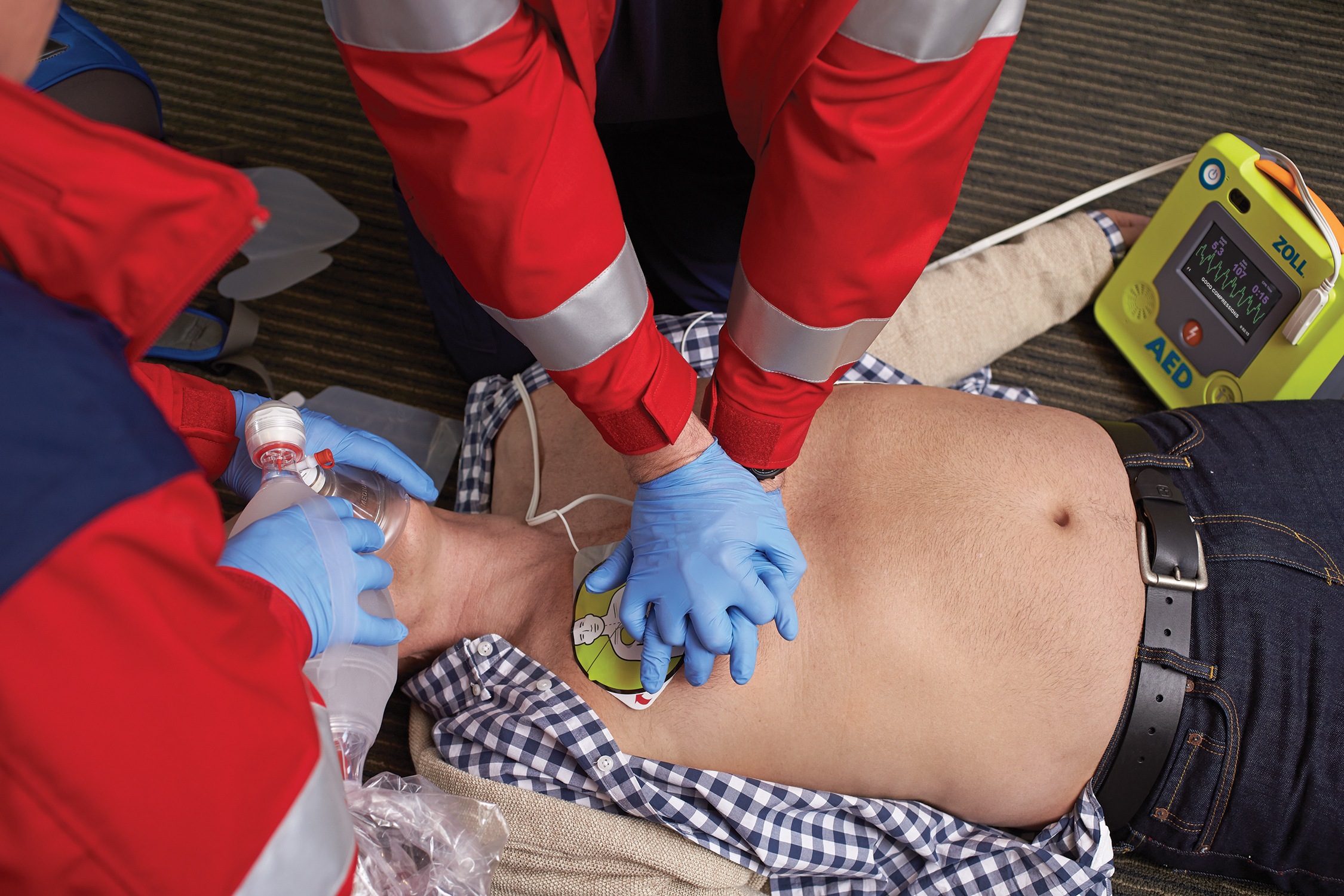
ACLS and BLS: What are the main differences? Here's what it is
Many people suffer from various diseases that cause life-threatening problems: BLS and ACLS are treatments adopted by emergency responders
Basic Life Support (BLS) and Advanced Cardiac Life Support (ACLS) are both supportive treatments that medical professionals provide to cardiac arrest patients and victims of serious injury.
The goal of both ACLS and BLS is the same: to learn the proper medical techniques to help save the life of a person in cardiac arrest.
But what are the differences between these two? Let’s take a look at this article!
What is BLS?
BLS or Basic Life Support involves various life-saving skills such as CPR, pulse checks, and compression-free rescue breaths.
BLS also uses specialized equipment such as AEDs (Automated External Defibrillators) and bag valve masks, to name a few.
It is mostly performed by healthcare professionals, such as doctors, physicians, nurses, emergency medical technicians, paramedics, and first responders such as police officers and firefighters.
What is ACLS?
ACLS stands for Advanced Cardiovascular Life Support.
In ACLS, healthcare providers use algorithms to treat life-threatening conditions such as cardiac arrest, heart attack, coronary syndrome, stroke, and other emergencies.
ACLS also involves interpreting a patient’s heart rhythm using an electrocardiogram.
Then, treatment options are decided based on your heart rhythm.
Individuals providing Advanced Cardiac Life Support must have the skills and knowledge to place an advanced airway and insert an IV or IO line to administer fluids and medications.
Additionally, they must have a thorough understanding of all the medications available to them that are used to treat the variety of heart rhythms and conditions they will encounter.
THE RADIO FOR RESCUERS IN THE WORLD? VISIT THE EMS RADIO BOOTH AT THE EMERGENCY EXPO
What are the differences between BLS and ACLS?
The main difference between Basic Life Support and Advanced Cardiovascular Life Support is the stage of treatment.
BLS is the supportive treatment that treats injuries and disease in the first stage that helps patients until the full treatment is provided.
On the other hand, ACLS is a supportive medical treatment that doctors use to provide treatment for serious heart problems, strokes, and other life-threatening emergencies.
Would you like to know more? Great idea: read the articles below carefully.
Read Also
Emergency Live Even More…Live: Download The New Free App Of Your Newspaper For IOS And Android
ABC Of CPR/BLS: Airway Breathing Circulation
How To Choose An Online ACLS Provider
First Aid And BLS (Basic Life Support): What It Is And How To Do It
Life-Saving Techniques And Procedures: PALS VS ACLS, What Are The Significant Differences?
European Resuscitation Council (ERC), The 2021 Guidelines: BLS – Basic Life Support
Life Saving Procedures, Basic Life Support: What Is BLS Certification?
First Aid: How To Do The Primary Survey (DR ABC)
How To Carry Out Primary Survey Using The DRABC In First Aid
The Physiologic Response To Bleeding
Bleeding In Trauma Patients: Tranexamic Acid (TXA) Has Minimal Effect In Stopping Bleeding
First Aid For Bleeding: 6 Steps To Treat External Bleeding
5 Types Of First Aid Shocks (Symptoms And Treatment For Shock)
Compensated, Decompensated And Irreversible Shock: What They Are And What They Determine
How And When To Use A Tourniquet: Instructions For Creating And Using A Tourniquet
T. Or No T.? Two Expert Orthopaedics Speak On The Total Knee Replacement
T. And Intraosseous Access: Massive Bleeding Management
Tourniquet, A Study In Los Angeles: ‘Tourniquet Is Effective And Safe’
Abdominal Tourniquet As An Alternative To REBOA? Let’s Find Out Together
A Tourniquet Is One Of The Most Important Pieces Of Medical Equipment In Your First Aid Kit
Brain Hemorrhage: Causes, Symptoms, Treatments
What Are The Causes Of Nosebleeds In Adults And Children?
Internal Haemorrhage: Definition, Causes, Symptoms, Diagnosis, Severity, Treatment
First Aid: When And How To Perform The Heimlich Maneuver / VIDEO
First Aid, The Five Fears Of CPR Response
Perform First Aid On A Toddler: What Differences With The Adult?
Heimlich Maneuver: Find Out What It Is And How To Do It
Chest Trauma: Clinical Aspects, Therapy, Airway And Ventilatory Assistance
Internal Haemorrhage: Definition, Causes, Symptoms, Diagnosis, Severity, Treatment
Respiratory Arrest: How Should It Be Addressed? An Overview
Cerebral Aneurysm: What It Is And How To Treat It
Cerebral Haemorrhage, What Are The Suspicious Symptoms? Some Information For The Ordinary Citizen
How To Carry Out Primary Survey Using The DRABC In First Aid
Heimlich Maneuver: Find Out What It Is And How To Do It
Signs And Symptoms Of Shock: How And When To Intervene
Wasp Sting And Anaphylactic Shock: What To Do Before The Ambulance Arrives?
Spinal Shock: Causes, Symptoms, Risks, Diagnosis, Treatment, Prognosis, Death
Cervical Collar In Trauma Patients In Emergency Medicine: When To Use It, Why It Is Important
KED Extrication Device For Trauma Extraction: What It Is And How To Use It
Introduction To Advanced First Aid Training
The Quick And Dirty Guide To Shock: Differences Between Compensated, Decompensated And Irreversible
What Should Be In A Paediatric First Aid Kit
Contusions And Lacerations Of The Eye And Eyelids: Diagnosis And Treatment
Epistaxis: What Causes Nosebleeds
Electric Shock First Aid And Treatment
10 Basic First Aid Procedures: Getting Someone Through A Medical Crisis
What Are The Causes Of Nosebleeds In Adults And Children?


